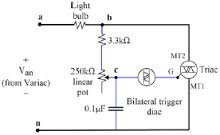MadRhino
100 GW
Looking like we are almost there. Something in series using 48v DC should make it ok to charge 24s lipo at the end.
40w heat to supply nearly 400w of charge is ~90% efficient.riba2233 said:If you waste that much energy on charging, what's the point of going electric?
now that you discovered the harsh reality, (that your charger is wasting energy)riba2233 said:If you waste that much energy on charging, what's the point of going electric?
DrkAngel said:40w heat to supply nearly 400w of charge is ~90% efficient.
Better than most chargers!
Penny for penny, electric vs gasoline, I get 1500-2500 eMPG.
Even at 50% charging efficiency ... electric looks a bit better ... ?
For you. ... ?riba2233 said:DrkAngel said:40w heat to supply nearly 400w of charge is ~90% efficient.
Better than most chargers!
Penny for penny, electric vs gasoline, I get 1500-2500 eMPG.
Even at 50% charging efficiency ... electric looks a bit better ... ?
In that case - 8)
But in Europe we have 230 V in our walls, so your method couldn't work without wasting too much energy.

riba2233 said:DrkAngel said:40w heat to supply nearly 400w of charge is ~90% efficient.
Better than most chargers!
Penny for penny, electric vs gasoline, I get 1500-2500 eMPG.
Even at 50% charging efficiency ... electric looks a bit better ... ?
In that case - 8)
But in Europe we have 230 V in our walls, so your method couldn't work without wasting too much energy.
DrkAngel said:Re-rigged a Forward reverse switch as a 24V to 48V shifter.
2 - 24V packs, "shifted" from parallel to serial. *
Switch does disengage all power in "neutral" center position.
Serial - Parallel Schematic

Available at - EBike Toolbox - Bargains! $
An SCR like that or a Triac circuit is easier way of full wave dimming the d.c. load through the bridge rec, the power factor could be a lot better too, so the full value of real power could be used instead of 1kW, 2 or 3kW might be available from the same outletMatt Gruber said:just ordered:
http://www.ebay.com/itm/2000W-SCR-Voltage-Regulator-Dimmer-Speed-Temperature-Controller-AC-110-220V/201071530709?_trksid=p2047675.c100010.m2109&_trkparms=aid%3D555012%26algo%3DPW.MBE%26ao%3D1%26asc%3D25880%26meid%3D1c2cf9b23c9044f9bff83337d6939d53%26pid%3D100010%26prg%3D10819%26rk%3D3%26rkt%3D24%26sd%3D221464802245


[/quote]DrkAngel said:Re-rigged a Forward reverse switch as a 24V to 48V shifter.
2 - 24V packs, "shifted" from parallel to serial. *
Switch does disengage all power in "neutral" center position.
Serial - Parallel Schematic

megacycle said:Is that current rating continuous or switching rating?DrkAngel said:Re-rigged a Forward reverse switch as a 24V to 48V shifter.
2 - 24V packs, "shifted" from parallel to serial. *
Switch does disengage all power in "neutral" center position.
* Important to remove bus bar on left side between #2 and #5 for Serial Parallel
Serial - Parallel Schematic

